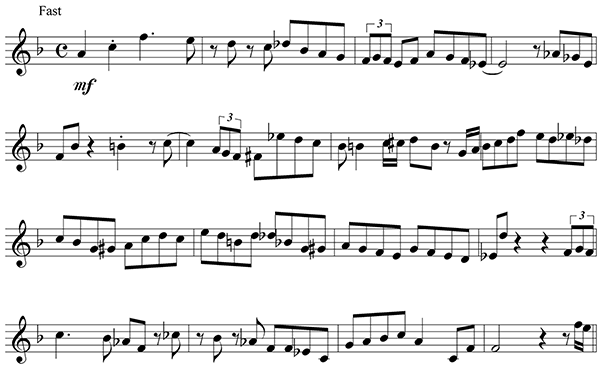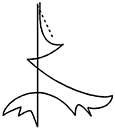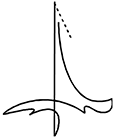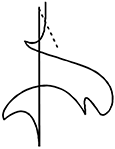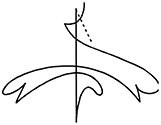Test Guide
Section 5: CSET: Music Subtest 1
Sample Multiple-Choice Questions
Expand All Answers | Collapse All Answers
Creating
1.1 Generate and Conceptualize Artistic Ideas and Work
1. This excerpt is representative of traditional music from which of the following countries?
(Audio: 20-second excerpt of mariachi music)
- Cuba
- Mexico
- Argentina
- Spain
- Enter to expand or collapse answer.Answer expanded
- Correct Response: B. The examinee would listen to a 20-second recording of a mariachi band. Mariachi music is representative of traditional music from Mexico and is distinguished by the use of 2 against 3 in the accompaniment as well as the use of violins, trumpets, guitars, vihuela, and guitarrón.
1.1 Generate and Conceptualize Artistic Ideas and Work
2. Which of the following terms best describes the pitch collection used in this excerpt?
(Audio: 20-second excerpt of a violin sonata from the twentieth century)
- pentatonic
- atonal
- whole tone
- modal
- Enter to expand or collapse answer.Answer expanded
- Correct Response: B. The examinee would listen to a 20-second recording of a violin sonata from the twentieth century. This excerpt lacks a tonal center; therefore, the pitch collection would be considered atonal.
1.1 Generate and Conceptualize Artistic Ideas and Work
3. Use the beginning of a tone row below to answer the question that follows.
- Enter to expand or collapse answer.Answer expanded
- Correct Response: B. A tone row consists of all twelve pitch classes arranged so that each one occurs once. In this example, the beginning of the tone row contains the notes D, A-flat, G, C-sharp, E, A-sharp, C, and F-sharp. The notes necessary to complete this tone row are A, B, F, and D-sharp/E-flat.
1.2 Organize and Develop Artistic Ideas and Work
4. Which of the following is the accurate transcription of the melodic rhythm performed by the flute in this excerpt?
(Audio: recorded excerpt played by a flute)
-
 has on beat one a dotted-eighth, sixteenth, eighth; on beat two three eighth notes; on beat three an eighth rest followed by four sixteenths
has on beat one a dotted-eighth, sixteenth, eighth; on beat two three eighth notes; on beat three an eighth rest followed by four sixteenths
-
 has on beat one a dotted-eighth, sixteenth, eighth; on beat two an eighth rest followed by two eighths; on beat three an eighth rest followed by four sixteenths
has on beat one a dotted-eighth, sixteenth, eighth; on beat two an eighth rest followed by two eighths; on beat three an eighth rest followed by four sixteenths
-
 has on beat one a quarter followed by two sixteenths; on beat two a quarter rest followed by two sixteenths; on beat three an eighth rest followed by four sixteenths
has on beat one a quarter followed by two sixteenths; on beat two a quarter rest followed by two sixteenths; on beat three an eighth rest followed by four sixteenths
-
 has on beat one a dotted-eighth, sixteenth, eighth; on beat two an eighth rest followed by two eighths; on beat three an eighth followed by four sixteenths
has on beat one a dotted-eighth, sixteenth, eighth; on beat two an eighth rest followed by two eighths; on beat three an eighth followed by four sixteenths
- Enter to expand or collapse answer.Answer expanded
- Correct Response: B. The examinee would listen to a recorded excerpt played by a flute. The rhythm of the melody in this excerpt is the one shown in response B.
1.2 Organize and Develop Artistic Ideas and Work
5. Use the example below to answer the question that follows.
This example represents which of the following notes?
- F
- D
- E
- C
- Enter to expand or collapse answer.Answer expanded
- Correct Response: D. The clef used in this example is the tenor clef; therefore, the fourth line from the bottom of the staff is the note C. The note shown in the example is one octave above the C line; therefore, it is also the note C.
1.2 Organize and Develop Artistic Ideas and Work
6. Which of the following terms best describes the structure of this excerpt?
(Audio: 20-second excerpt of a symphony from the Romantic period)
- motive
- theme
- phrase
- subject
- Enter to expand or collapse answer.Answer expanded
- Correct Response: B. The examinee would listen to a 20-second excerpt of a Romantic symphony. The excerpt would present a theme from the symphony. The excerpt is longer and more complete than a motive or a simple phrase.
1.3 Refine and Complete Artistic Work
7. Use the example below to answer the question that follows.
a three-measure melody on a five-line staff with a bass clef, G minor key signature, and three-four time signature. The second chord is a quarter note in the second space with the figured bass six-five below it.
Which of the following is the Roman numeral analysis for the second chord?
- Enter to expand or collapse answer.Answer expanded
- Correct Response: D. The example is in the key of G minor. The figured bass symbol
 under the second note of the example indicated that the chord is a seventh chord in first inversion. Since the second note of the example is C, the root of the chord would be A, which is the second scale degree in the key of G minor. In a minor key, the symbol for a chord built on the second scale degree is i i . Since there are no accidentals indicated for this chord, it must be a diatonic seventh chord. In a minor key, the quality of the diatonic seventh chord built on the second scale degree is half-diminished. Therefore, the Roman numeral analysis for the second chord would be
under the second note of the example indicated that the chord is a seventh chord in first inversion. Since the second note of the example is C, the root of the chord would be A, which is the second scale degree in the key of G minor. In a minor key, the symbol for a chord built on the second scale degree is i i . Since there are no accidentals indicated for this chord, it must be a diatonic seventh chord. In a minor key, the quality of the diatonic seventh chord built on the second scale degree is half-diminished. Therefore, the Roman numeral analysis for the second chord would be  .
.
1.3 Refine and Complete Artistic Work
8. When setting words to a melody, a composer should prioritize:
- determining the metrical accents of the syllables.
- using rhythmical variety for each word or phrase.
- considering the implied harmony that could be added.
- ensuring that weaker syllables end with weaker cadences.
- Enter to expand or collapse answer.Answer expanded
- Correct Response: A. When setting words to a melody, a composer should first determine which syllables of the text are accented and which are unaccented. This step helps the composer decide on an appropriate meter and rhythm for the setting.
1.3 Refine and Complete Artistic Work
9. Use the melody below to answer the question that follows.
a two-measure melody with a pickup in the bass clef. The melody is in C minor and four-four time. The pitches of the pickup and measure one are G, C, D, E-flat, B-flat. The downbeat of measure two is A natural.
In harmonizing this melody, which of the following chords would be most appropriate for the downbeat of measure 2?
-

-

-

- 5 of 5
- Enter to expand or collapse answer.Answer expanded
- Correct Response: D. On beats 1 and 2 of measure 2, the A-natural and the F-sharp are both part of the 5 of 5 chord (D, F-sharp, A-natural). After the 5 of 5 chord, one would typically expect the V chord. On beats 3 and 4 of this measure, the G, D, and B-natural are all part of the V chord. Therefore, 5 of 5 would be the most appropriate chord for the downbeat of measure 2.
Performing
2.1 Select, Analyze, and Interpret Artistic Work for Performance
10. Use the musical passage below to answer the question that follows.
a score of a sixteen-measure improvised melody. It uses a treble clef, one flat in the key signature, and has common time and mezzo forte dynamics. The tempo indication is fast. The melody is rhythmically complicated, incorporating triplets, tied notes, and syncopation. In addition, the melody also incorporates chromatic notes in most of the measures.
This musical passage is an example of which of the following styles of jazz improvisation?
- fusion
- swing
- bebop
- traditional
- Enter to expand or collapse answer.Answer expanded
- Correct Response: C. The style of jazz known as bebop is marked by fast, complicated improvisations that incorporate chromatic elements and irregular rhythms. This musical passage is to be performed at a fast tempo. The melody is rhythmically complicated, incorporating triplets, tied notes, and syncopation. In addition, the melody also incorporates chromatic notes in most of the measures.
2.1 Select, Analyze, and Interpret Artistic Work for Performance
11. Which of the following sequential solfège patterns would be most appropriate for singing intervals of thirds?
- do–re–do; re–mi–re; mi–fa–mi; etc.
- do–re; mi–fa; sol–la; etc.
- do–mi; re–fa; mi–sol; etc.
- do–re–mi; re–mi–fa; mi–fa–sol; etc.
- Enter to expand or collapse answer.Answer expanded
- Correct Response: C. The solfa pattern do-mi represents the interval between the first and third scale degrees of a major scale, a major third. The pattern re-fa represents the interval between the second and fourth scale degrees, a minor third. Likewise, the pattern mi-sol represents the interval between the third and fifth scale degrees, also a minor third.
2.2 Develop and Refine Artistic Techniques and Work for Presentation
12. Listen to the excerpt and use the example below to answer the question that follows.
a seventeen-measure melody for B-flat clarinet. The piece is in F major, two-four time, and marked briskly. The response options refer to eight measures, which are described as follows using Middle C as C4. Measures three and four: eighth rest, three staccato eighth notes A4, C5, D5, accented eighth note A4 slurred to dotted quarter note G4. Measures six and seven: accented and slurred eighth note F5, quarter note D5, tied eighth note A5 tied to eighth note A5, three staccato eighth notes G5, F5, G5. Measures nine and ten: eighth rest, three staccato eighth notes D5, F5, G5, accented eighth note A5 tied to dotted quarter note C6. Measures eleven and twelve: eighth rest, three staccato eighth notes A5, G5, A5, accented eighth note F5 tied to dotted quarter note A5.
In this excerpt, the clarinetist makes an error in articulation in which of the following measures?
(Audio: recorded performance of the musical score printed above; the clarinetist plays measures 9 and 10 with legato articulation)
- measures 3 and 4
- measures 6 and 7
- measures 9 and 10
- measures 11 and 12
- Enter to expand or collapse answer.Answer expanded
- Correct Response: C. The examinee would listen to a recorded performance of the musical score printed. In this performance, the clarinetist plays measures 9-10 entirely with legato articulation, rather that with staccato articulation in measure 9 and legato articulation in measure 10 with an accent on the downbeat.
2.2 Develop and Refine Artistic Techniques and Work for Presentation
13. Which of the following beat patterns would be most appropriate for conducting a piece in slow 6 slash 8 meter?
- Enter to expand or collapse answer.Answer expanded
- Correct Response: B. The conducting pattern for a piece in slow 6 slash 8 meter should show six subdivisions, with the midline being crossed on the fourth subdivision.
2.2 Develop and Refine Artistic Techniques and Work for Presentation
14. During a full rehearsal, a choral director notices that the basses are singing an F instead of an F-sharp in a particular musical passage. Which of the following would be the director's best response to this error?
- making note of the error and reviewing the passage with the basses during the next rehearsal
- having the entire choir sing the passage again to see if the basses continue to make this error
- bringing the error to the attention of the basses as soon as possible and reviewing the passage with them
- telling the basses to practice this passage during their next sectional rehearsal to correct the error.
- Enter to expand or collapse answer.Answer expanded
- Correct Response: C. In this situation, the basses have sung an incorrect pitch. The best time to address this would be as soon as possible after it occurs so that the performers have an opportunity to hear the passage performed correctly. Otherwise, the basses will be likely to continue to sing this incorrect pitch in future rehearsal and performances of this passage.
2.3 Convey Meaning Through the Presentation of Artistic Work
15. During a live musical performance that utilizes the natural acoustics of a performance space, the musicians should ideally hear:
- a mild blend of reflected sounds from multiple points.
- a strong reflection of sound from the back wall of the performance space.
- a minimal amount of reflected, blended sound.
- a strong reflection of sound from the ceiling of the performance space.
- Enter to expand or collapse answer.Answer expanded
- Correct Response: A. In acoustics, the term blend refers to the mixing of sounds from performers and the distribution of these sounds to listeners. In an ideal situation, a musical performance space will reflect sounds from multiple points to create a balance, blended sound.











